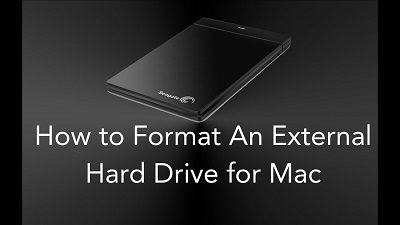How to Format External Hard Drive Mac
How to format external hard drive Mac: Buying an external hard drive is one of the best options for adding the storage space to the Mac computer system. While you have bought this drive, you will find the drive already formatted for your Mac or Windows system. However, you have to reformat the drive to make it functional with your Mac computer. The file systems used for different OS, differ from each other for processing data.
After unpacking the new drive you have to set its connection with Mac PC. One of the significant steps for you is to deal with the Disk Utility option, present under Utilities in the Application menu. There are mounted disk images and connected drives in the sidebar. You can choose one of these drives, identify the name and space available there.
Table of Contents
How to Format External Hard Drive Mac
Before starting the formatting hard drive in Mac, you have to connect your Mac system to External Hard Drive. You may also set a direct connection to your computer.
- Open Disk Utility– Go to the Applications folder and then to another folder, known as Utilities.
- Click on Finder and then go to Menu Bar. Hit the option- Utilities
- Choose Dropdown Menu and then click on the option- Show All Devices. From Show Sidebar option, you may find out the drives
- Click on the Hard Drive that needs formatting
- Find the option- Erase in Top Center and then click on it
- Format- You can prefer Mac OS Extended or APFS file system Scheme- Find GUID Partition Map and hit the button Erase
- You will see a green checkmark. Now, you may check the hard drive to know whether the process has formatted it.
Thus, we have presented you with a number of options to format external hard drive in Mac computer.
Related Post: How to show hidden files on Mac
Types of File system in Mac
Before format external hard drive in Mac, you should know about the file systems offered by Disk Utility.
1. “HFS+” File system
Hierarchical File System+ or Mac OS Extended is one of the file systems, useful to the Mac storage. This type of file system is the right choice to be usable for SSDs and mechanical drives. When your Mac system was bought a number of years ago, you may find macOS Extended as the best option, helping you to use the external drive.
HFS+ formatted external drives play smoothly with both new and old Apple’s OS. For accessing Extended file system content on your Windows computer, you have to use another software- Paragon HFS+
2. Apple File System
It is the latest file system, introduced by Apple in 2017. It has replaced the Mac Extended file system. In most of the modern Macs, you can find come with APFS file system.
In case of the flash storage and SSDs, you may choose Apple File System. However, it is also usable with conventional mechanical HDD. One of the best refinements done to the previous file system of Apple is the speed. Due to the way in which this file system arranges the data, you can find the fastest copy-paste process. Apple has also dealt with better metadata management and encryption. The macOS highly use metadata for file storage.
3. “exFAT” File system
Microsoft has designed it for providing FAT32 compatibility. This exFAT is the best format for those drives, which are sharable between Mac and Windows computers. Moreover, Windows and macOS have the capability of reading and writing exFAT volumes. That is why you can use exFAT for external drives and flash storage drives.
The primary issue with this exFAT file system is that it has a fragmentation problem. Still, you may rely on your own preference for choosing this file system.
Follow Us On:
